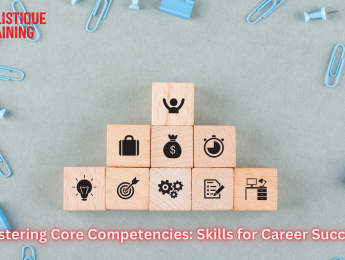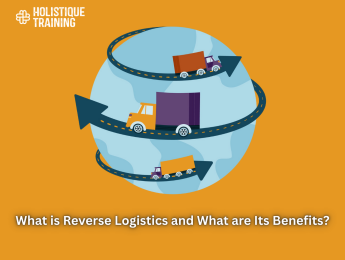Introduction
Competitive advantage is the set of characteristics or circumstances that enable a business to deliver products or services more effectively or at a lower cost than its rivals. This advantage positions the company more favorably in its sector, allowing it to achieve higher sales or profit margins and attract and keep a larger customer base than its competitors.
Competitive advantage stems from several core areas, such as cost structure, product offerings, customer service, and brand reputation. It can be derived from many sources, including technological innovation, unique features or capabilities, superior supply chain management, deeper market penetration, and more effective marketing strategies. The concept is crucial for long-term success and sustainability, as it helps businesses differentiate themselves in a crowded market, attract and retain customers, and achieve higher levels of profitability.
Why Is Competitive Advantage Important for Businesses?
Competitive advantage is crucial for businesses because it determines their ability to outperform competitors, capture market share, and ensure long-term sustainability and growth. This strategic edge enables companies to dominate their market space, attract a loyal customer base, and achieve superior financial performance. Here’s a detailed exploration of why competitive advantage is so important for businesses:
- Increased Market Share and Customer Loyalty: A strong competitive advantage allows a business to stand out in a crowded marketplace, attracting customers and fostering loyalty. Customers tend to gravitate towards companies that offer something uniquely valuable, whether it's lower prices, higher quality products, exceptional service, or innovative features. This differentiation helps businesses capture and retain a larger share of the market.
- Higher Profit Margins: Businesses with a competitive advantage often enjoy higher profit margins. They can charge premium prices for superior products or services or operate more efficiently to reduce costs. This financial strength supports reinvestment in innovation, marketing, and further enhancements to products or services, fueling a cycle of growth and profitability.
- Brand Recognition and Reputation: A well-established competitive advantage contributes to stronger brand recognition and a positive reputation. When customers associate a brand with specific benefits or values, such as reliability, innovation, or quality, the business gains credibility and authority in its sector. This reputation can be a significant draw for new customers and a deterrent for competitors attempting to enter the market.
- Resilience to Market Fluctuations: Companies with a distinct competitive advantage are better positioned to withstand market fluctuations and economic downturns. Their unique offerings or efficient operations can help maintain customer interest and sales, even when overall market conditions are challenging.
- Enhanced Negotiating Power: A strong competitive position can provide businesses with greater leverage in negotiations with suppliers, distributors, and partners. This can lead to more favorable terms, lower supply costs, and access to exclusive resources or distribution channels, further strengthening the company’s market position.
- Attractiveness to Investors: A clear competitive advantage makes a business more attractive to investors and potential partners. It signals the company's potential for sustained growth and profitability, making it a more appealing investment opportunity. This can provide the capital necessary for expansion, research and development, and other strategic initiatives.
- Ability to Scale: Businesses that establish a competitive advantage can more easily scale their operations. Whether through geographic expansion, diversification of product lines, or scaling production capacities, these companies can leverage their advantage to capture new opportunities and enter new markets.
- Employee Attraction and Retention: Finally, companies with a strong competitive advantage often find it easier to attract and retain top talent. Employees are drawn to successful companies that offer stability, growth opportunities, and the chance to work on innovative products or services. A talented and motivated workforce further reinforces the company's competitive position.
Competitive advantage is the cornerstone of business success. It not only helps companies to differentiate themselves and appeal to customers but also lays the foundation for sustainable growth, profitability, and resilience against competitive pressures. Businesses that recognize, develop, and protect their unique advantages are better positioned to thrive in the long term.
How Can Businesses Identify Their Competitive Advantage?
Identifying competitive advantage is crucial for businesses aiming to distinguish themselves in the market and achieve sustainable growth. This process involves a thorough analysis of the company's internal capabilities, market position, and external environment. Here’s a structured approach for businesses to identify their competitive advantage:
- Conduct a SWOT Analysis: Start with a SWOT analysis to evaluate the internal and external factors affecting the business. Strengths and weaknesses focus on internal aspects, such as resources, capabilities, and processes, while opportunities and threats assess external market conditions and competitive landscape. This analysis helps identify areas where the company excels and potential areas for development.
- Analyze the Value Chain: Examine the company's value chain—the series of steps involved in producing a product or delivering a service. Look for areas where the company adds unique value that competitors cannot easily replicate. This could be through superior design, efficient production processes, exceptional customer service, or innovative distribution strategies.
- Benchmark Against Competitors: Compare your business's products, services, and operations against those of key competitors. Identify areas where your company outperforms others, such as product quality, cost efficiency, customer satisfaction, or speed to market. Benchmarking can highlight competitive strengths and areas for improvement.
- Gather Customer Insights: Customer feedback is invaluable in identifying what they perceive as your company's strengths. Use surveys, focus groups, and social media listening to understand why customers choose your products or services over competitors. Insights about what customers value most can reveal your competitive advantage.
- Assess Industry Trends: Stay informed about trends and shifts in the industry and broader market. Analyzing these trends can help identify emerging opportunities for differentiation or areas where the company is well-positioned to lead. This could relate to technology adoption, consumer behavior changes, or regulatory shifts.
- Evaluate Core Competencies: Core competencies are the unique strengths that allow a business to achieve a competitive advantage. Identify capabilities that are valuable to customers, rare among competitors, costly to imitate, and fully exploitable by the company. These could include proprietary technologies, specialized expertise, or strong brand identity.
- Leverage Data Analytics: Utilize data analytics to uncover patterns, trends, and insights that can inform strategic decisions. Analyzing sales data, market share, customer behavior , and operational efficiency can reveal areas of strength and competitive advantage.
- Involve Cross-functional Teams: Engaging teams from across the organization can provide diverse perspectives on where the company excels. Involving multiple departments in the identification process can ensure a comprehensive view of the company's competitive strengths.
- Monitor Competitive Landscape: Regularly monitoring the competitive landscape can help identify shifts in competitors' strategies and market dynamics. Keeping an eye on the competition can reveal opportunities to further differentiate and strengthen your competitive position.
- Consult with Industry Experts: Sometimes, an external perspective can provide valuable insights. Consulting with industry analysts, advisors, or consultants can help identify competitive advantages that the company may have overlooked.
Recognizing competitive advantage is a continuous journey that demands ongoing analysis and flexibility. As the market evolves, so too should a business’s understanding of what sets it apart. By rigorously analyzing internal strengths, market position, and customer perceptions, companies can pinpoint their unique competitive advantages and strategically leverage them for long-term success.
What Are the Different Types of Competitive Advantage?
Competitive advantage allows businesses to outperform their rivals, and it can manifest in various forms. Understanding the different types of competitive advantage is crucial for businesses strategizing to establish a strong market position. Here's an overview of the primary types of competitive advantage:
- Cost Leadership: This type of competitive advantage is achieved when a company becomes the lowest cost producer in its industry. Cost leadership enables a business to offer products or services at lower prices than competitors, attracting price-sensitive customers. Companies achieve cost leadership through economies of scale, efficient production processes, cost-saving innovations, and tight cost control. The challenge here is maintaining quality while reducing costs.
- Differentiation: Differentiation involves offering unique products or services that are valued by customers and perceived as superior to those of competitors. This uniqueness can be derived from product design, brand image, technology, customer service, or other attributes. Differentiation allows companies to charge premium prices, foster customer loyalty, and protect market share against competitors. The key is ensuring that the differentiating factors are difficult for competitors to replicate.
- Focus Strategy: Focus or niche strategies involve targeting a specific segment of the market rather than the entire market. Companies can achieve a competitive advantage by understanding and serving the unique needs of a particular niche better than competitors who may be targeting a broader audience. This focus can be based on geographic location, customer demographics, or specific product features. The success of a focus strategy depends on the company's ability to deeply understand and cater to the needs of its target segment.
- Innovation: Companies that consistently innovate can achieve a competitive advantage by being the first to market with new products, services, or technologies. Innovation can disrupt traditional markets, create new market spaces, and establish the company as a market leader. The challenge with innovation as a competitive advantage is the need for continual investment in research and development and the risk of obsolescence.
- Operational Efficiency: Operational efficiency involves optimizing internal processes to deliver products or services more effectively and at a lower cost than competitors. This can include superior supply chain management, advanced technology adoption, streamlined operations, and high-quality production. Companies with high operational efficiency can offer competitive pricing and quick delivery times, contributing to customer satisfaction and loyalty.
- Customer Experience: Creating a superior customer experience can serve as a competitive advantage, especially in industries where products and prices are similar. This includes providing exceptional customer service, personalization, convenience, and positive interactions across all touchpoints. Companies that excel in customer experience can build strong relationships with customers, encouraging repeat business and referrals.
- Brand and Reputation: A strong brand and positive reputation can be significant competitive advantages. They can influence customer perception and preference, creating an emotional connection that transcends price and product features. Building and maintaining a strong brand requires consistent communication, delivering on promises, and positive customer experiences.
- Sustainability and Corporate Social Responsibility (CSR): As consumers become more environmentally conscious and socially aware, sustainability and CSR initiatives can become competitive advantages. Companies that demonstrate a commitment to environmental protection, ethical practices, and social responsibility can differentiate themselves and attract customers who prioritize these values.
Identifying and leveraging the right type of competitive advantage requires a deep understanding of the company’s strengths, the competitive landscape, and customer preferences. A well-executed strategy that focuses on a specific type of competitive advantage can help businesses achieve long-term success and sustainability in the marketplace.
Table 1: Types of Competitive Advantage and Their Challenges
Type | Description | Challenges |
Cost Leadership | Lowest cost producer, offering lower prices. | Maintaining quality while cutting costs. |
Differentiation | Unique offerings that stand out. | Keeping differentiators hard to copy. |
Focus Strategy | Targeting specific market segments. | Deeply understanding niche needs. |
Innovation | Leading with new products or technologies. | Continual R&D investment and obsolescence risk. |
Operational Efficiency | Delivering with superior efficiency. | - |
Customer Experience | Providing superior service and interaction. | - |
Brand and Reputation | Building emotional connections through brands. | Consistent quality and positive experiences. |
Sustainability and CSR | Committing to environmental and social responsibility. | - |
What Role Does Innovation Play in Achieving Competitive Advantage?
Innovation plays a pivotal role in securing a competitive advantage by differentiating a company's products or services, processes, and business models from those of its competitors. It's the driving force behind creating unique value propositions that appeal to customers, improving operational efficiencies, and opening new market opportunities. Here's a detailed exploration of how innovation fosters competitive advantage:
Product and Service Innovation: By developing new products or enhancing existing ones, companies can meet unfulfilled customer needs or offer superior solutions compared to those available in the market. This not only attracts new customers but also builds loyalty among existing ones, leading to increased market share and profitability.
Process Innovation: Innovating internal processes can significantly reduce costs, improve quality, and speed up delivery times. Companies that excel in process innovation can often offer their products or services at a lower price or with better service levels than their competitors, making them the preferred choice among customers.
Business Model Innovation: Rethinking how a business creates, delivers, and captures value can lead to a significant competitive advantage. Companies that successfully innovate their business models can disrupt existing markets or create entirely new ones, positioning themselves as leaders in the space.
Market Positioning through Innovation: Innovation can help a company redefine its market positioning by targeting new customer segments or creating new categories of products and services. This strategic differentiation makes it difficult for competitors to directly compete and allows the innovating company to dominate niche markets.
Technology Leadership: Staying ahead in technology adoption or development can provide a substantial competitive edge. Companies that leverage cutting-edge technologies can optimize their operations, offer innovative features, or improve customer experiences, setting them apart from competitors.
Creating Barriers to Entry: Innovative products, services, or processes can create high barriers to entry for potential competitors. Patents, proprietary technologies, and unique competencies developed through innovation can deter new entrants, protecting the company's market position.
Enhancing Brand Reputation: Companies known for innovation are often perceived as leaders in their industry. This reputation can enhance customer trust and loyalty, attracting more business and enabling the company to command premium pricing.
Adaptability and Resilience: Innovation fosters adaptability and resilience, enabling companies to respond more effectively to changes in the market, technology, or consumer preferences. This agility ensures that the company can maintain its competitive advantage even as the business environment evolves.
Innovation is not just a tool for competitive advantage; it is a critical component of a company's strategy to remain relevant and successful in a rapidly changing marketplace. By prioritizing innovation, businesses can not only differentiate themselves from competitors but also ensure long-term growth and sustainability.
Conclusion
Competitive advantage is the cornerstone of business success, defining the battleground on which companies strive for market supremacy. It's the unique blend of offerings, processes, and strategies that sets a company apart from its competitors, enabling it to deliver superior value to customers, achieve greater market share, and ensure sustainable growth. This article has navigated through the essence of competitive advantage, exploring its significance, the mechanisms for its identification, the various forms it can take, and the pivotal role of innovation in its attainment.
Understanding and leveraging competitive advantage is not just about excelling in one area but orchestrating a symphony of strategies that collectively elevate a business above the competitive fray. It demands a deep understanding of one's own capabilities, the needs and desires of the market, and the continuous pursuit of excellence and innovation. As businesses navigate the complex and ever-evolving market landscape, the insights provided herein offer a roadmap to not only identifying and cultivating their unique competitive advantages but also ensuring their relevance and leadership in the marketplace. In the pursuit of competitive advantage, businesses must be vigilant, adaptable, and relentlessly innovative, for it is in this endeavor that they find the keys to long-term success and sustainability.

























